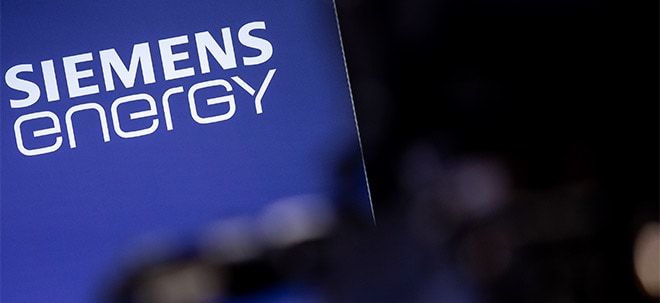Dun & Bradstreet Global Survey of 10,000 Executives Uncovers Intensifying Strategic Risks Across Supply Chains, Trade and Investment Flows
Werte in diesem Artikel
Persistent macroeconomic uncertainty and supply chain vulnerabilities drive decline in business confidence for a third consecutive quarter
JACKSONVILLE, Fla., July 8, 2025 /PRNewswire/ -- Dun & Bradstreet (NYSE: DNB), a leading global provider of business data and analytics, today released its Global Business Optimism Insights report, demonstrating the lowest level of optimism for the upcoming quarter since late 2023. The report reflects the weighted responses from a May/June 2025 survey of approximately 10,000 business leaders across 32 economies and 17 sectors.
Following a 12.9% drop in optimism for Q1 and a modest 1.3% drop for Q2, the Global Business Optimism Index declined another 6.5% amid continued macroeconomic uncertainty and mounting supply chain concerns around the world. The report reveals 54% of business leaders expect trade tensions to either remain unchanged or intensify, while 46% anticipate de-escalation through formal agreements or informal arrangements. Although many central banks have begun cutting interest rates, rate reductions have yet to translate into better financial conditions for many businesses.
"Geopolitical instability in the Middle East, persistent trade frictions and concerns about slowing global demand have contributed to a significant shift in business risk appetite among survey respondents," said Neeraj Sahai, President of Dun & Bradstreet International. "With global conditions remaining unsettled, many businesses are re-evaluating their investment priorities and reinforcing resilience strategies to navigate ongoing uncertainty."
Sector-wise, the global decline in business sentiment was more pronounced in manufacturing
(-8.3%) than services (-5.4%). The most affected segments were metal manufacturing, automotives and capital goods—all of which are exposed to shifts in trade policy and global supply chain dependencies.
Across many industries, businesses are contending with margin compression driven by slowing demand and persistently high input costs. For some, the strategy of raising prices to protect margins is reaching its limits. For example, manufacturers of discretionary spending goods, such as textiles (-17.0%), electricals (-15.0%), metals (-12.7%) and automotives (-9.7%), were among the businesses reporting the largest quarterly declines in optimism with respect to operating margins.
Key findings from the Q3 2025 report:
- The Global Business Optimism Index dropped 6.5% amid trade policy uncertainty, softening sales and slowing trade. With continued tariff risks and global demand softening, businesses across emerging and advanced economies are pivoting inward – turning to domestic markets.
- More than a third (34%) of businesses identified domestic growth as the top fallback strategy in the face of potential tariff escalations.
- The Global SupplyChain Continuity Index declined 9.7%, bringing optimism levels down 18.6% year-to-date. Decreases among both advanced and emerging economies suggest systemic global supply chain challenges.
- More than half of the businesses surveyed outside the U.S. are actively seeking alternative international markets or partners beyond the U.S. The EU, at 23%, and Asia–excluding the Chinese Mainland–at 15%, emerged as the preferred alternatives. Only 5% of businesses identified the Chinese Mainland as their top fallback for growth, suggesting the geopolitical considerations are now a significant factor in market selection decisions.
- The Global Business Financial Confidence Index contracted 3.4%, with 60% of businesses displaying optimism about cheaper borrowing costs, down from nearly 70% last quarter.
- Less than half of businesses expect to receive timely payment for their goods and services, implying that more businesses appear to be delaying outflows to manage working capital more tightly, in part due to reducing margins.
- The Global Business Investment Confidence Index fell 13.1%, the third straight decline. Uncertainty surrounding global trade, supply chains and geopolitics has dominated business capital expenditure decisions and pushed confidence lower, despite many major central banks lowering interest rates.
- 55.4% of businesses are expecting to raise long–term funds, a drop from 70% the previous quarter, signifying businesses are not only delaying capital expenditures but are also deleveraging their balance sheets in preparation for long-term disruption.
- The Global Business ESG Index, which captures ESG sentiment, held steady, but sharp contrasts emerged. Medium-sized businesses, particularly in emerging economies, posted strong ESG gains, while large businesses in advanced economies saw declines — likely reflecting compliance strain and evolving disclosure requirements. Large businesses in emerging economies made only marginal gains, while those in advanced economies saw an 8.4% drop, possibly reflecting regulatory fatigue or cost pressures.
- Globally, one in six businesses placed ESG at the core of supplier selection, though it still trails traditional criteria such as cost competitiveness and geopolitical risk profile as primary decision drivers.
"In response to this uncertain environment, businesses should look to accelerate strategic shifts in their supply chains. Trade frictions, tariff risks and regulatory volatility are reinforcing the case for friendshoring, nearshoring and multi-sourcing as essential risk-mitigation strategies," said Arun Singh, Global Chief Economist at Dun & Bradstreet. "At the same time, businesses are reassessing credit exposure and working capital cycles, with rising payment delays and tighter liquidity underscoring the need for stricter financial management. Agility—underpinned by real-time data and insights into capital structure, payment behavior, and supplier dependencies — will be essential for navigating the volatility ahead."
Descriptions and information about the indices can be found on page 29 of the report.
About the Global Business Optimism Insights Report
The Global Business Optimism Insights report is a synthesis of data from a comprehensive survey encompassing 32 economies, covering approximately 10,000 businesses and 17 sectors, alongside insights from Dun & Bradstreet, leveraging the firm's proprietary data and economic expertise. The report is an amalgamation of five indices that reflect overall business optimism and expectations about supply chain continuity, financial and investment conditions and ESG initiatives. An index reading above 100 indicates an improvement in optimism relative to the base year, while an index reading below 100 signifies a deterioration in optimism.
View the full report here.
About Dun & Bradstreet
Dun & Bradstreet, a leading global provider of business decisioning data and analytics, enables companies around the world to improve their business performance. Dun & Bradstreet's Data Cloud fuels solutions and delivers insights that empower customers to accelerate revenue, lower cost, mitigate risk and transform their businesses. Since 1841, companies of every size have relied on Dun & Bradstreet to help them manage risk and reveal opportunity. For more information on Dun & Bradstreet, please visit www.dnb.com.
![]() View original content to download multimedia:https://www.prnewswire.com/news-releases/dun--bradstreet-global-survey-of-10-000-executives-uncovers-intensifying-strategic-risks-across-supply-chains-trade-and-investment-flows-302499317.html
View original content to download multimedia:https://www.prnewswire.com/news-releases/dun--bradstreet-global-survey-of-10-000-executives-uncovers-intensifying-strategic-risks-across-supply-chains-trade-and-investment-flows-302499317.html
SOURCE Dun & Bradstreet
Übrigens: Dun Bradstreet und andere US-Aktien sind bei finanzen.net ZERO sogar bis 23 Uhr handelbar (ohne Ordergebühren, zzgl. Spreads). Jetzt kostenlos Depot eröffnen und als Geschenk eine Gratisaktie erhalten.
Ausgewählte Hebelprodukte auf Dun Bradstreet
Mit Knock-outs können spekulative Anleger überproportional an Kursbewegungen partizipieren. Wählen Sie einfach den gewünschten Hebel und wir zeigen Ihnen passende Open-End Produkte auf Dun Bradstreet
Der Hebel muss zwischen 2 und 20 liegen
| Name | Hebel | KO | Emittent |
|---|
| Name | Hebel | KO | Emittent |
|---|
Nachrichten zu Dun & Bradstreet
Analysen zu Dun & Bradstreet
| Datum | Rating | Analyst | |
|---|---|---|---|
| 14.02.2018 | DunBradstreet Overweight | Barclays Capital | |
| 13.11.2017 | DunBradstreet Equal Weight | Barclays Capital | |
| 10.02.2017 | DunBradstreet Underweight | Barclays Capital | |
| 11.02.2015 | DunBradstreet Buy | Stifel, Nicolaus & Co., Inc. | |
| 21.01.2015 | DunBradstreet Underweight | Barclays Capital |
| Datum | Rating | Analyst | |
|---|---|---|---|
| 14.02.2018 | DunBradstreet Overweight | Barclays Capital | |
| 11.02.2015 | DunBradstreet Buy | Stifel, Nicolaus & Co., Inc. | |
| 22.09.2014 | DunBradstreet Outperform | Robert W. Baird & Co. Incorporated | |
| 25.05.2012 | DunBradstreet overweight | Barclays Capital |
| Datum | Rating | Analyst | |
|---|---|---|---|
| 13.11.2017 | DunBradstreet Equal Weight | Barclays Capital |
| Datum | Rating | Analyst | |
|---|---|---|---|
| 10.02.2017 | DunBradstreet Underweight | Barclays Capital | |
| 21.01.2015 | DunBradstreet Underweight | Barclays Capital |
Um die Übersicht zu verbessern, haben Sie die Möglichkeit, die Analysen für Dun & Bradstreet nach folgenden Kriterien zu filtern.
Alle: Alle Empfehlungen


